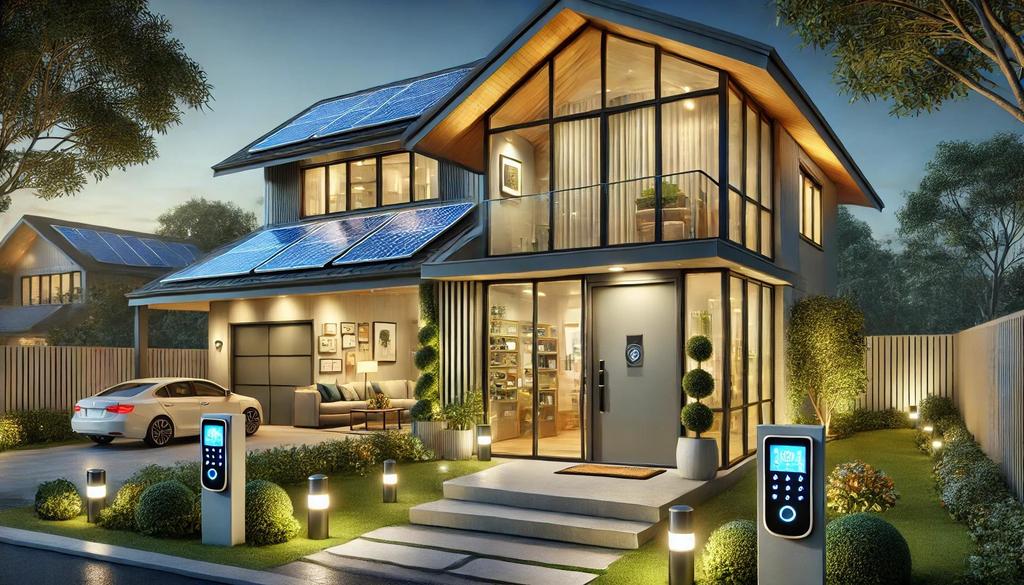Creating a healthy and safe home environment is essential for the well-being of you and your family. Whether you’re concerned about indoor air quality, pest control, or overall safety, taking a few simple steps can make a significant difference in your home’s livability. Here are six effective ways to improve your home’s health and safety, ensuring a cleaner, more comfortable space for everyone.
1.Enhance Indoor Air Quality
Ensuring good indoor air quality stands as a pillar of a healthy home environment. Poor air quality often results in respiratory issues, allergies, and various health concerns. Begin by ventilating the home regularly to facilitate the circulation of fresh air. Open windows and doors whenever the weather allows. Installing exhaust fans in moisture-prone areas like kitchens and bathrooms can be highly beneficial.
Using air purifiers is another great way to remove dust, allergens, and other airborne contaminants. Additionally, houseplants like spider plants, peace lilies, and snake plants can naturally improve air quality by filtering out toxins. To keep pollutants at bay, replace air filters in your HVAC system regularly and avoid using chemical-laden cleaning products, which can release harmful volatile organic compounds (VOCs) into the air.
2.Keep Your Home Clean and Decluttered
A clean and organized home is a safer and healthier environment. Regularly cleaning surfaces, floors, and hard-to-reach areas helps eliminate dust, dirt, and germs that can cause illness. Use non-toxic, eco-friendly cleaning products to minimize exposure to harsh chemicals, which can irritate the skin and respiratory system.
Decluttering your home also plays a role in maintaining safety. Cluttered spaces make it harder to clean effectively and can pose tripping hazards, especially in walkways, stairs, and high-traffic areas. A clutter-free home is easier to clean, improves mental well-being, and reduces the risk of accidents. Make it a habit to regularly sort through items, donate or recycle what you don’t need, and invest in storage solutions to keep things organized.
3.Prevent Pests from Entering Your Home
Maintaining a clean, safe, and healthy living environment necessitates diligent pest prevention. Pests such as ants, cockroaches, and rodents pose significant health risks by spreading diseases and causing structural damage. Begin by sealing any gaps, cracks, or holes in the home’s foundation, walls, windows, and doors. These small entry points, often overlooked, offer easy access for pests in search of food and shelter. Enhance pest defense by installing door sweeps and weather stripping around windows and doors. Regular inspections and maintenance of the home’s exterior are crucial, focusing on vulnerable areas such as plumbing, utility lines, and vent openings.
Inside the home, cleanliness is paramount in deterring pests from invading living spaces. Food scraps, dirty dishes, and trash attract unwanted guests. To minimize this risk, store food in airtight containers, promptly clean spills and crumbs, and remove garbage regularly. A well-maintained home not only repels pests but also minimizes their hiding spots. Employ natural deterrents for keeping ants out, such as vinegar, lemon juice, or essential oils such as peppermint, to ward off ants, as they find these substances unappealing. In severe infestations, professional pest control services may be necessary to ensure the home remains pest-free and secure for all inhabitants.

4.Install Smoke and Carbon Monoxide Detectors
Equipping a home with fully operational smoke and carbon monoxide detectors significantly enhances safety. Smoke detectors play a vital role by alerting occupants to potential fires, providing critical time to evacuate and summon assistance. Smoke detectors should be installed in every bedroom, hallway, and living area, and monthly tests should be performed to confirm correct functionality. Moreover, batteries require replacement at least once annually.
Equally essential, carbon monoxide detectors protect against this hazardous, colorless, and odorless gas, which poses a lethal risk if left undetected. Install detectors near sleeping areas and any room where fuel-burning appliances, such as gas stoves or water heaters, are located. Regularly inspect and maintain these appliances to prevent carbon monoxide leaks and ensure the detectors are up-to-date and functioning properly.
5.Improve Water Quality
The quality of the water in your home directly affects your health. Installing water filters can reduce contaminants such as chlorine, lead, and other harmful substances that may be present in tap water. Whether you opt for a whole-house water filtration system or individual filters for your kitchen tap, ensuring clean, safe drinking water is a top priority.
Additionally, be mindful of water damage in your home, as it can lead to mold growth, which can cause respiratory issues and other health problems. Regularly check for leaks under sinks, around windows, and in basements. Fix any leaks promptly and ensure proper ventilation in moisture-prone areas to prevent mold from developing. If mold is already present, removing it using mold-specific cleaning products or seeking professional remediation services is essential.

6.Upgrade Home Security
Enhancing home security remains essential for ensuring both safety and tranquility. Installing security cameras, motion sensor lights, and smart locks significantly deters intruders, safeguarding the property against break-ins. With advancements in technology, these security devices have become more affordable and accessible. Many modern smart home systems facilitate remote property monitoring via smartphone applications.
Beyond technological measures, securing doors and windows proves vital. Implementing deadbolt locks on all exterior doors and reinforcing sliding doors with additional locking mechanisms enhance security. Ensure windows possess reliable locks and make it a practice to secure them when leaving the home. Additionally, maintaining a well-lit exterior serves as an effective deterrent to potential intruders, as it reduces opportunities for concealment during criminal activities.
Finally, create an emergency plan with your family, including escape routes and designated safe areas in the event of a break-in, fire, or other emergencies. Regular drills can help ensure everyone knows how to respond quickly and calmly in a dangerous situation.
Transform Your Living Space: Essential Tips for a Safe, Healthy, and Sustainable Home
Creating a healthy and safe home environment involves straightforward yet impactful improvements that significantly enhance well-being. Prioritizing air and water quality, fortifying against pests and intruders, and maintaining vigilance regarding smoke and carbon monoxide safety contribute to a secure and comfortable space for all family members. Implementing these strategies facilitates the maintenance of a healthier and safer living environment, offering increased peace of mind for residents.




